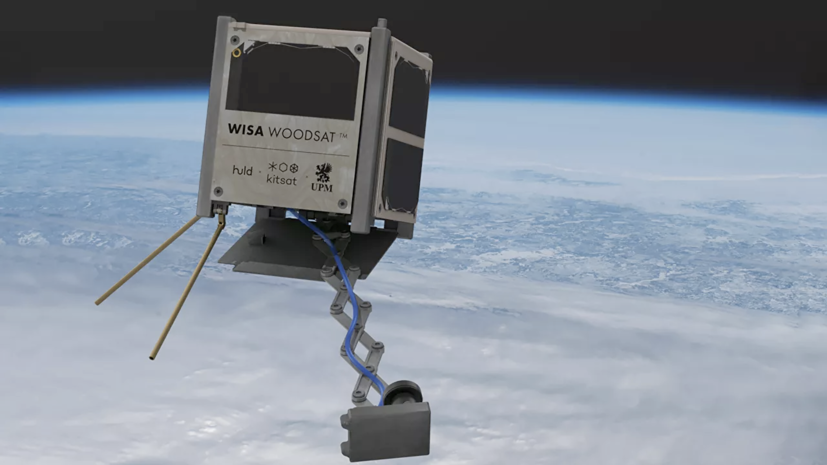Is wood suitable as a building material for satellites? A Finnish project wants to find out together with Esa. A satellite made from renewable raw materials: Three Finnish companies have built a satellite made of wood and want to launch it into space. The European Space Agency Esa is participating in the project.
Wisa Woodsat is a Cubesat, i.e. a cube with an edge length of 10 centimeters that weighs only one kilogram. Its outer skin is made entirely of plywood. Only the rails that are used to deploy the satellite and the bracket for a camera are made of metal.
Esa has developed several sensors for the satellite. These should record how well wood is suitable as a building material for spacecraft. For example, it is about whether the wood emits moisture or a certain, highly reactive variant of oxygen that can damage the spacecraft or its systems. Two cameras, one of which is attached outside, are supposed to monitor whether the wood is damaged. The energy supply for sensors and cameras is provided by several solar cells.
Why is wood not used in space?
The idea comes from Finn Jari Makinen, science journalist, and co-founder of the company Arctic Astronautics. “I’ve always liked to build model airplanes, with many wooden parts. After working in the field of aerospace education, I wondered why we do not use wood in space”, said Makinen. The satellite was designed by the Finnish company Huld. UPM Plywood, one of the world’s largest manufacturers of plywood, will be there.
Makinen made the first test in 2017 with a balloon that launched his satellite into the stratosphere. Then the project picked up speed and it was possible to get a place on an electron launcher from the New Zealand company Rocketlab.
Woodsat is scheduled to go into space this year. It should orbit at an altitude of 500 to 600 kilometers in an approximately polar, sun-synchronous orbit.
